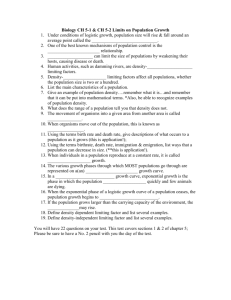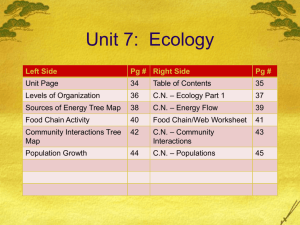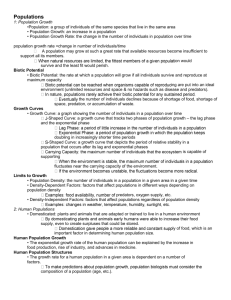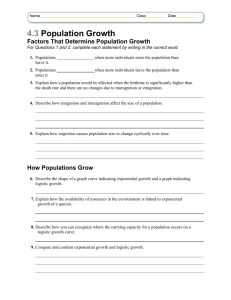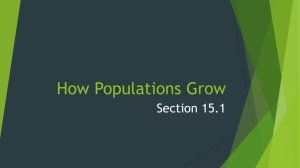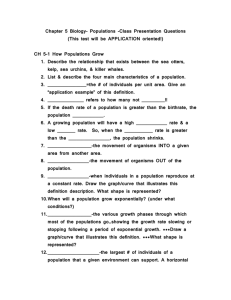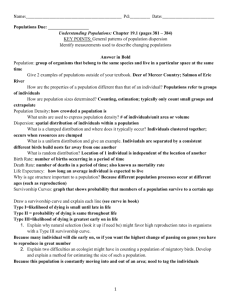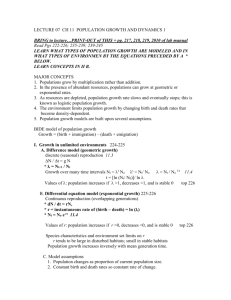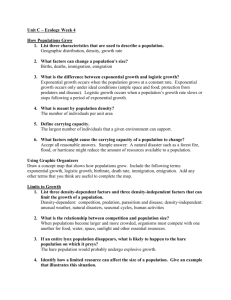Population Dynamics Study Guide - Integrated Science
advertisement
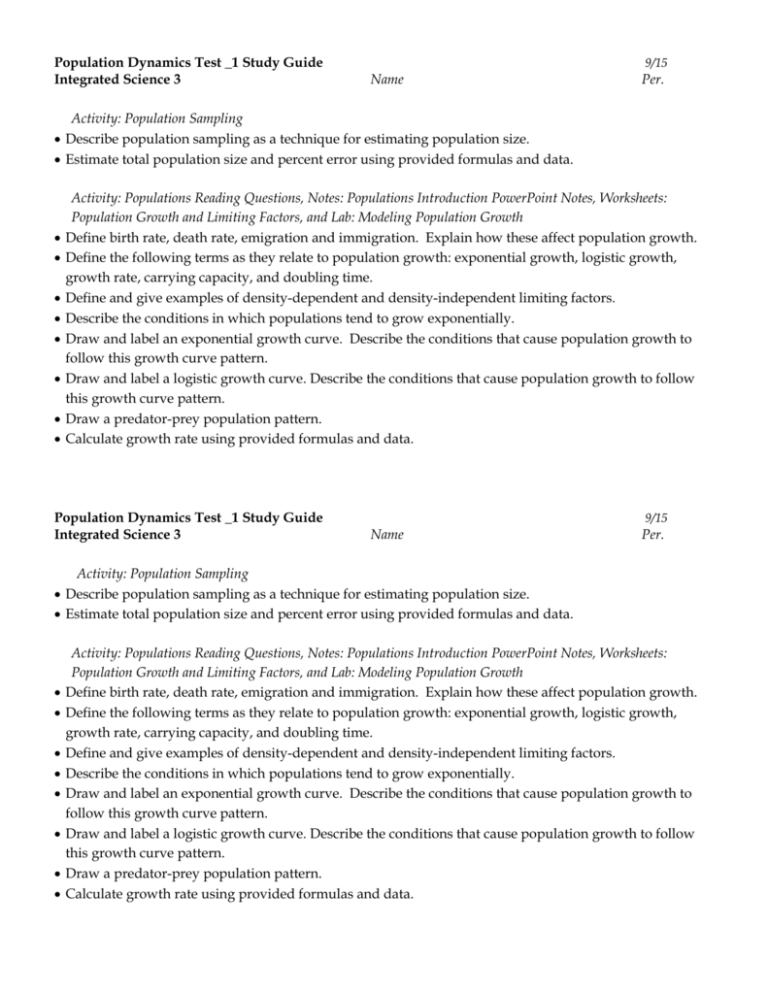
Population Dynamics Test _1 Study Guide Integrated Science 3 9/15 Name Per. Activity: Population Sampling Describe population sampling as a technique for estimating population size. Estimate total population size and percent error using provided formulas and data. Activity: Populations Reading Questions, Notes: Populations Introduction PowerPoint Notes, Worksheets: Population Growth and Limiting Factors, and Lab: Modeling Population Growth Define birth rate, death rate, emigration and immigration. Explain how these affect population growth. Define the following terms as they relate to population growth: exponential growth, logistic growth, growth rate, carrying capacity, and doubling time. Define and give examples of density-dependent and density-independent limiting factors. Describe the conditions in which populations tend to grow exponentially. Draw and label an exponential growth curve. Describe the conditions that cause population growth to follow this growth curve pattern. Draw and label a logistic growth curve. Describe the conditions that cause population growth to follow this growth curve pattern. Draw a predator-prey population pattern. Calculate growth rate using provided formulas and data. Population Dynamics Test _1 Study Guide Integrated Science 3 9/15 Name Per. Activity: Population Sampling Describe population sampling as a technique for estimating population size. Estimate total population size and percent error using provided formulas and data. Activity: Populations Reading Questions, Notes: Populations Introduction PowerPoint Notes, Worksheets: Population Growth and Limiting Factors, and Lab: Modeling Population Growth Define birth rate, death rate, emigration and immigration. Explain how these affect population growth. Define the following terms as they relate to population growth: exponential growth, logistic growth, growth rate, carrying capacity, and doubling time. Define and give examples of density-dependent and density-independent limiting factors. Describe the conditions in which populations tend to grow exponentially. Draw and label an exponential growth curve. Describe the conditions that cause population growth to follow this growth curve pattern. Draw and label a logistic growth curve. Describe the conditions that cause population growth to follow this growth curve pattern. Draw a predator-prey population pattern. Calculate growth rate using provided formulas and data.

